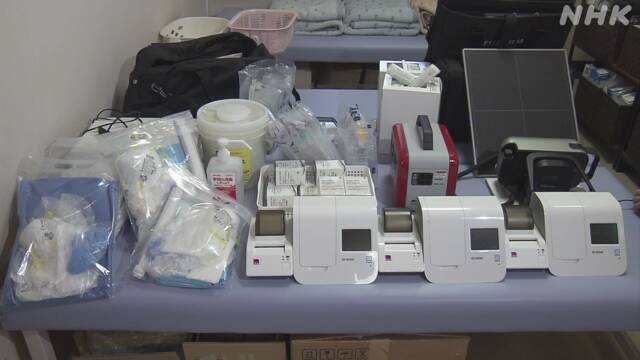In the sixth wave of the new coronavirus, outbreaks occurred one after another in facilities for the elderly, so Osaka Prefecture, with the cooperation of local doctors, is strengthening efforts to dispatch home-visit teams to facilities where outbreaks have occurred. Although they are embarking, the doctors on the team have expressed a sense of crisis that the number of medical institutions that cooperate with them is small and "if the number of infected people increases again, the current home visit system may not be able to handle it."
Outbreaks of outbreaks at facilities for the elderly and facilities for the disabled in Osaka Prefecture have reached 773 facilities by the 3rd of this month, even in the sixth wave, and the cumulative number of infected people has exceeded 12,000.
In response to this situation, the prefecture has begun to strengthen its efforts to dispatch a home-visit team to the facility where the outbreak occurred with the cooperation of local doctors in order to quickly connect the infected person in the facility to treatment.
Of these, the clinic in Kawachinagano City has visited 13 facilities since January at the request of Osaka Prefecture and the public health center.
At this clinic, a team of 6 to 7 people, including doctors, nurses, and clerical staff, visits as a team and uses portable PCR testing equipment to understand the spread of infection and to detect serious illness. In addition to giving intravenous drip treatments to prevent the disease, we also bring in testing equipment to take X-ray photographs of the lungs to check for signs of pneumonia.
Dr. Takuro Mizuno of the clinic is concerned about the system of home visits.
As a result of the call from the prefecture, the number of medical institutions that cooperate with home visits has increased to about 100, but according to Dr. Mizuno, there are biases depending on the region, and the number is not sufficient in some regions.
Dr. Mizuno said, "In order to control the spread of infection and administer therapeutic drugs so that it does not become severe, it is important to make a home visit as soon as possible. If the number of infected people increases again, the current home visit system will be used. There is a risk that some areas will not be able to handle it, and we need to increase the number of medical institutions that we cooperate with. "
Correspondence status of cooperating medical institutions
According to the summary of Osaka Prefecture, 82 people died in the facility as of the 6th of this month in connection with the outbreak in the facility for the elderly and the facility for the disabled due to the 6th wave of the new coronavirus. That's more than double the 40 people in the 4th wave, which was the largest so far.
In response to this situation, Osaka Prefecture investigated the response status of cooperating medical institutions designated in advance for each facility.
As a result, 25% of the 3601 facilities that responded said that cooperating medical institutions could prescribe the new Corona drug.
In addition, 13.4% of the facilities said that they could infuse neutralizing antibody drugs such as "Sotrobimab", and 11% said that they could administer antiviral drugs. It was only about 30% of.
In a nursing home with support
An outbreak occurred in February this year at an elderly home in Matsubara City, Osaka, which was supported by a home visit team.
In the wake of the fever and positive results of 3 residents, 20 people including residents and staff were confirmed to be infected one after another within a week or so.
A home visit team was dispatched from the prefecture, and the first improvement was infection control in the facility.
Unlike hospitals, elderly housing with care has a fixed room for each person, so it was not possible to gather people who were found to be infected in one place.
Therefore, at the facility, he received the advice of the team, prepared protective clothing in front of each room, and changed clothes every time the staff entered the room for long-term care, so that he was careful not to spread the infection.
In addition, the home visit team provided treatment such as intravenous drip to infected persons in the facility at an early stage.
As a result, the two who had the underlying illness were hospitalized for a period of time, but all others were mild and eventually all recovered.
Mr. Masumi Nakatani, the director of Oasis Kitatan Shibaki, said, "Because it was the first time that an infected person appeared in the facility, we started putting on and taking off protective clothing, and there is a possibility that we could not do it properly by ourselves. I was able to control the spread of the infection by receiving support for infection control and treatment within the facility. "

